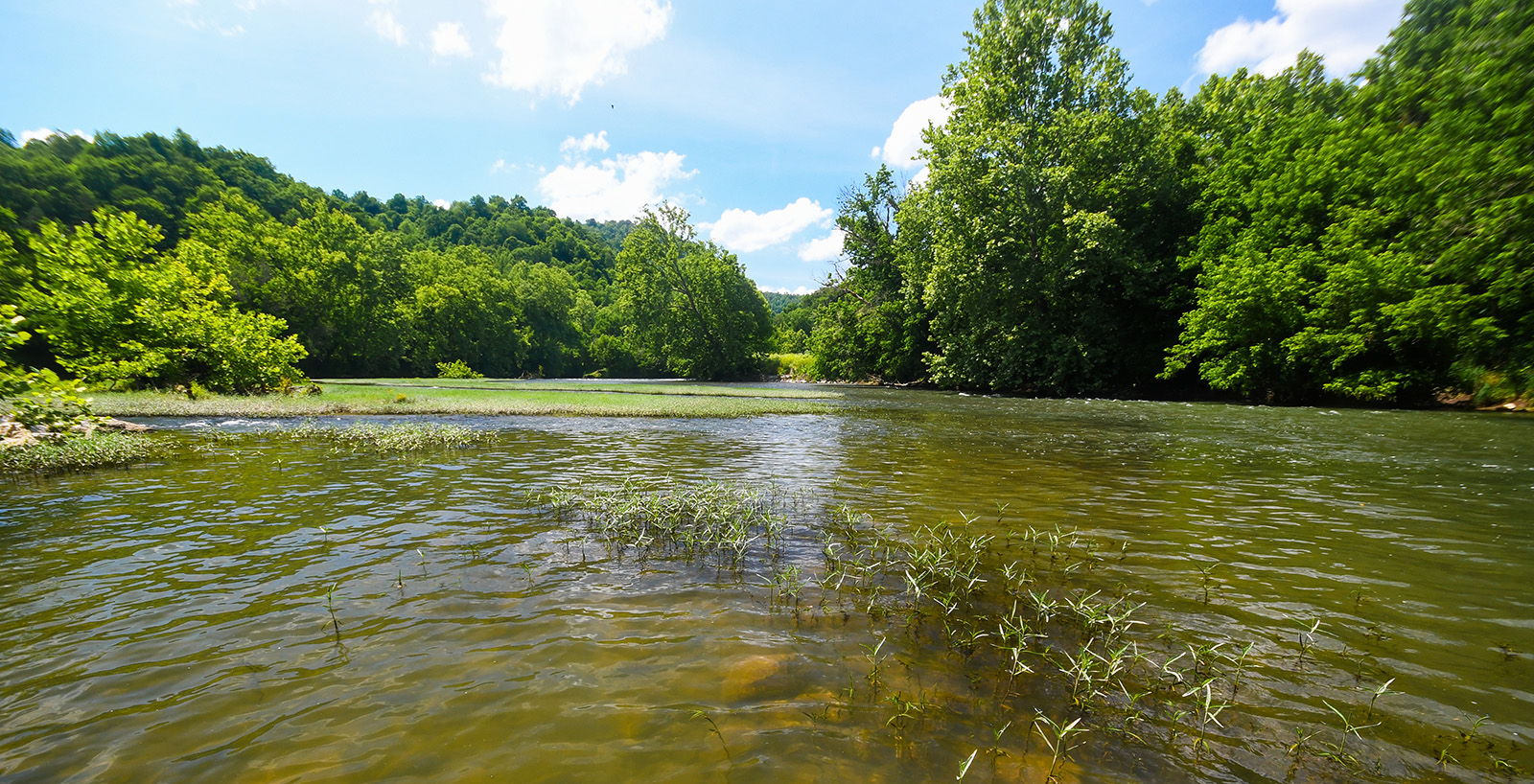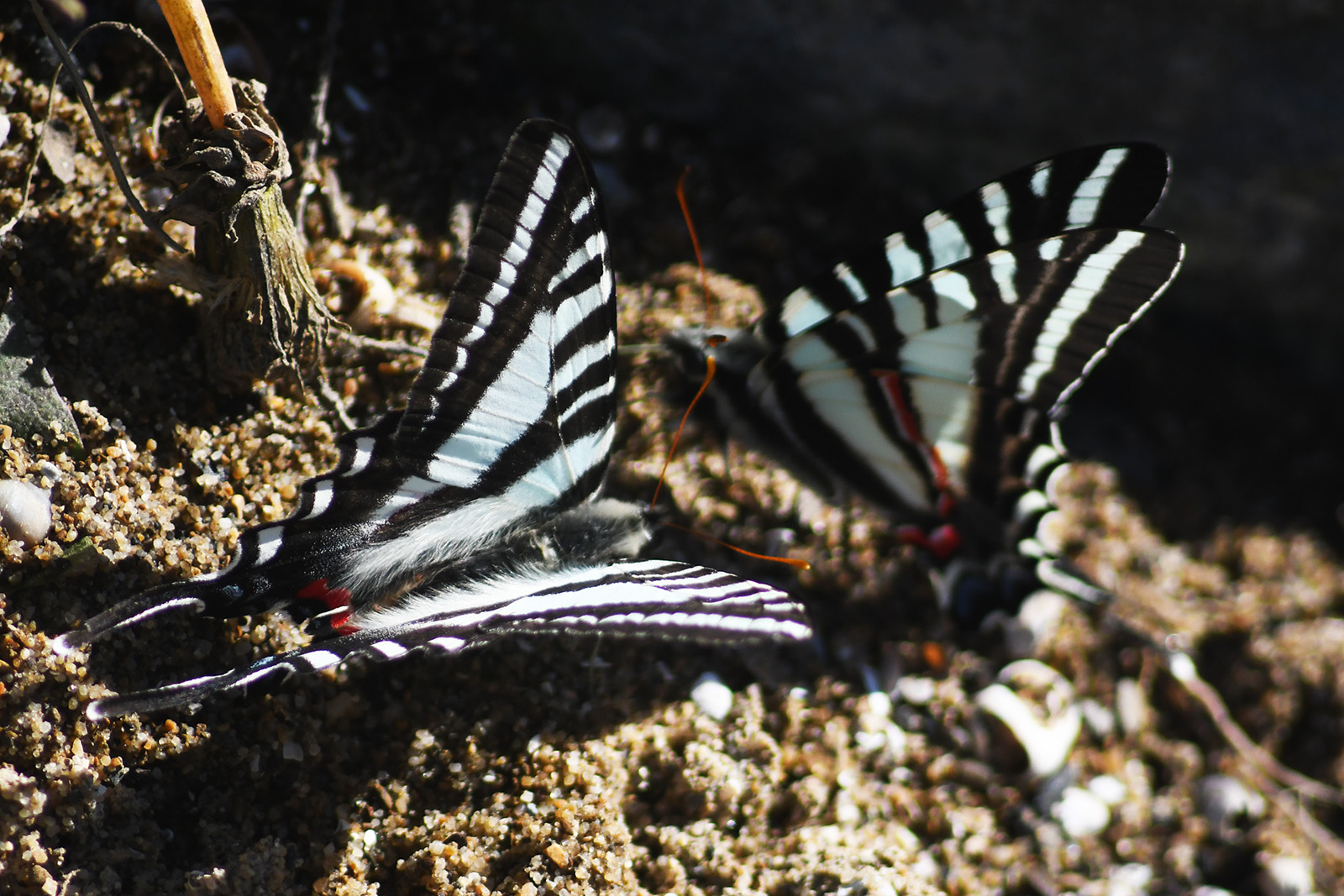By Matt Reilly
Photos by Matt Reilly
The Clinch River is the crown jewel of southwest Virginia for its rugged character, spectacular scenery, and great diversity of aquatic life. From its headwaters near Tazewell, the Clinch flows some 135 miles through the most remote corner of the Old Dominion on its way to the Tennessee state line. Located between the towns of Gate City and Duffield, the Clinchport Boating Access Site is one of two formal, Department of Wildlife Resources (DWR)-owned concrete ramps on a river otherwise well-populated with informal access, and is a key access point for fishing, boating, and wildlife viewing on the lower half of this beautiful waterway.
The Clinchport boat ramp is located on river right, just a short drive down the Clinch River Highway (Rt. 65) from U.S. Route 23. A large gravel parking lot and concrete ramp suitable for launching everything from canoe and kayaks to motorized boats greet the visitor.

Anglers will find the Clinch River to be an incredibly unique opportunity for multi-species fishing. Many of the sport fish that have been stocked to provide attractive sport fisheries in other popular Virginia rivers are native to the Clinch, including smallmouth bass, spotted bass, and walleye. The Clinch is also home to a native sauger population. Freshwater drum, channel and flathead catfish, largemouth bass, rock bass, redbreast and longear sunfish, longnose gar, and musky are also present.
The Clinchport boat ramp can be used as a put-in or take-out for multiple float trips. The first begins six miles upstream at the Hill Station access, which can be found under the bridge at the corner of the Clinch River Highway (Rt. 65) and Manville Road (Rt. 645) on river right. The Hill Station access is informal and perfect for launching kayaks and canoes with just a short carry down to the river. However, the steep and rugged gravel approach from the parking area to the river requires four-wheel drive, making it less-than-ideal for launching larger crafts.
The float from Hill Station to Clinchport begins with shallow riffles and moderate gradient, but the majority of the float is through slow, deep water. A significant ledge about two miles into the float marks the beginning of the long Clinchport pool. Good smallmouth fishing can be found in the shallow, moving water near the beginning of this float, while the rest of the float offers good catfish, sunfish, and walleye fishing and even some shots at the copious number of longnose gar that call the river home.

From the Clinchport ramp, there are two float options. The first is just 1.8 miles to the Rexrena access on river left. This float is characterized by riffles, ledges, and runs, and offers quality smallmouth fishing and paddling. The Rexrena access is an informal access, and the first DWR Public Opportunities for Wildlife-Related Recreation (POWRR) program property to be offered to recreationists.
The other is a long, 11-mile float to the Tennessee state line. Most of this float is through slow water, so lots of paddling will be in order. The informal takeout is on river left and is pretty rugged. It can be reached via Rt. 627 from US Rt. 23.
Despite the vast diversity of sport fish that fin the Clinch, it’s the non-game aquatic wildlife diversity that really puts the river on the map. There are 46 species of freshwater mussels and more than 100 non-game fish native to the Clinch River, making it one of the most biodiverse rivers in the world. Of this multitude of species, 29 species of mussels and 19 species of fish present in the Clinch are federally listed as threatened or endangered species. For those willing to don a snorkel and wetsuit, the spring months represent a spectacular opportunity to view the many darter and minnow species that call the river home as they display their spawning colors and perform their fascinating reproductive rituals.

On sunny days, the boater with a discerning eye focused on the exposed rocks and logs along the bank of the Clinch may notice other forms of aquatic wildlife that are unique to the Clinch. Northern map and spiny softshell turtles are both almost entirely aquatic turtles, and thus their range is restricted by the boundaries of the waters they call home. In Virginia, these reptiles are only native to the Upper Tennessee River watershed and are only present in the Clinch and a few other streams.
Above the water, riparian birds can be seen hunting the river’s edge. Belted kingfishers, double-breasted cormorants, great blue herons, and the occasional yellow-crowned night heron are common sights.
The dense riverbottoms that border the Clinch, packed to the brim with native pawpaw trees, attract another striking terrestrial creature. Zebra swallowtails—elegant native butterflies that sport light blue to white and black barring with red hotspots and trademark swallowtail tassels—flock to these riverbottoms in the spring. The pawpaw is the zebra swallowtail’s only known host plant, and the presence of the winged adults in the Clinch River Valley is a concerted effort to lay eggs and perpetuate their species.

Situated on the lower end of the beautiful Clinch River, the Clinchport boat ramp is one of the few formal, concrete landings on this gem of a stream. For the naturalist, multi-species angler, and boater, the Clinch River is a trip worth making, and an invaluable resource in the state’s most remote corner.
Matt Reilly is a full-time freelance writer, outdoor columnist, and fly fishing guide based in southwest Virginia.


